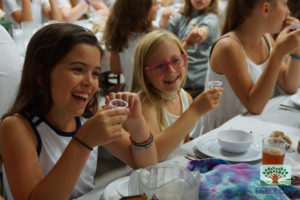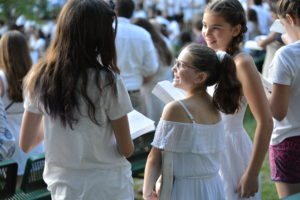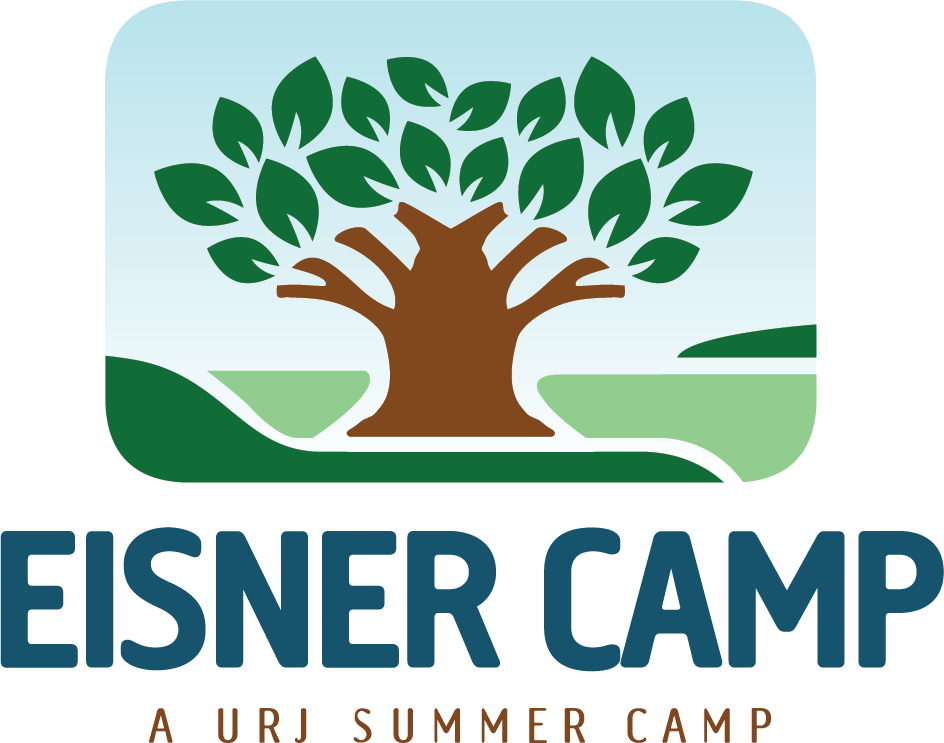by Rabbi Liz P.G. Hirsch, Assistant Director
This summer, what did you see? This week, we read parashat Re’eh, which translates to “behold” or “look.” For many, this is the first Shabbat we will spend at home, apart from each other and outside the Eisner Bubble. Shabbat is one of the most sacred times at camp – full of singing, dancing, and joy. There is nothing like Shabbat at camp.
If you spent a Shabbat at camp with us this summer, or if you ever spent a Shabbat at camp, call to mind a memory or a moment from Shabbat. It might help you to close your eyes, take a deep breath, and imagine that special moment. Re’eh. What do you see?
Paint a picture of the scene. Is it Friday evening? Is everyone dressed in white? Are you jumping and shouting in song session, or kicking your heels on the quad? Are the cool, evening shadows falling over Beit T’filah, or is the sun shining brightly as you strum a guitar in front of all of camp for the first time? Use your mind’s eye to select the perfect colors to fill in the lines and shapes and smiles. Re’eh. What do you see?
Now memorize that moment. Every detail, every aspect, every person you saw there. Re’eh. What do you see?
 We experience thousands upon thousands of moments each summer at camp. Some are happy, some challenging, all cause us to grow. Camp is a rare environment where we can live in the moment and be fully present for all of our experiences. We lived and learned and loved these moments, but as the summer fades into fall, we will not remember every single thing that happened to us here.
We experience thousands upon thousands of moments each summer at camp. Some are happy, some challenging, all cause us to grow. Camp is a rare environment where we can live in the moment and be fully present for all of our experiences. We lived and learned and loved these moments, but as the summer fades into fall, we will not remember every single thing that happened to us here.
Now go back to your moment, your Shabbat memory – or perhaps another incredible moment from this summer. Fix that memory in your mind. Wrap it up tightly and store it away, write it down in a journal, or text it to a friend. Store that memory away somewhere so you can always call it to mind, this first Shabbat away from our camp community and every Shabbat. Hold it close and draw on the memory of this place and the people who make it a kehilah kedoshah, a sacred community, as a source of strength and peace. Re’eh. What do you see?
